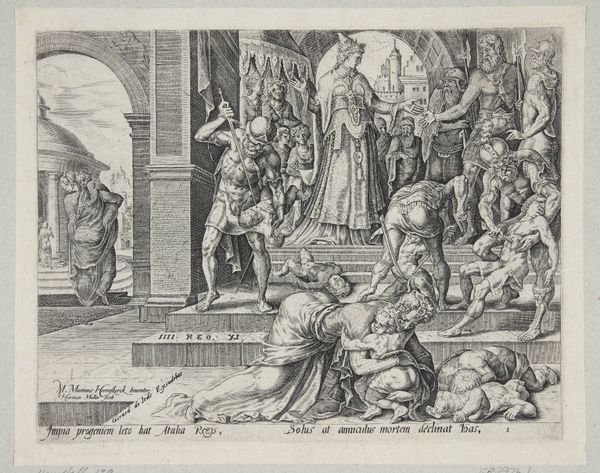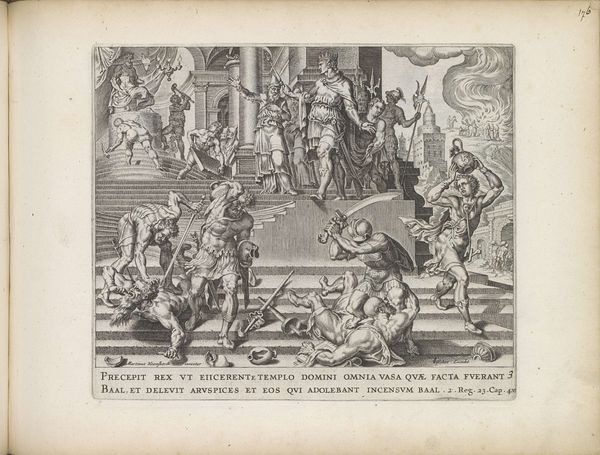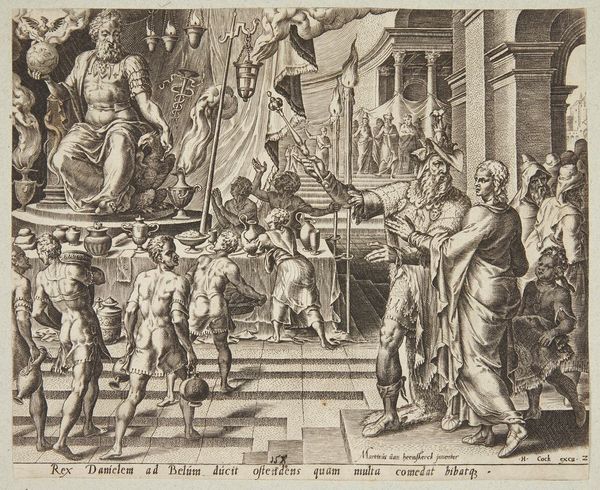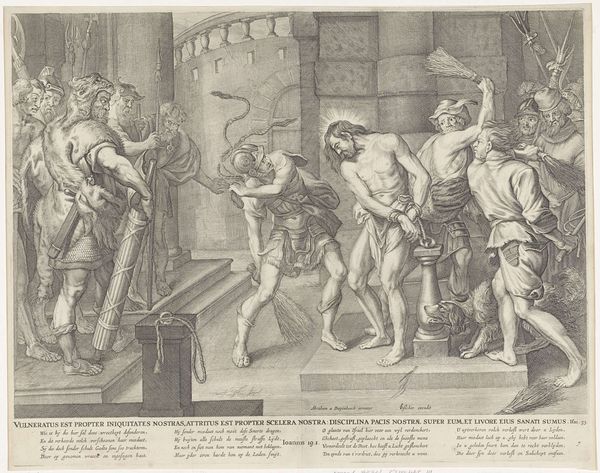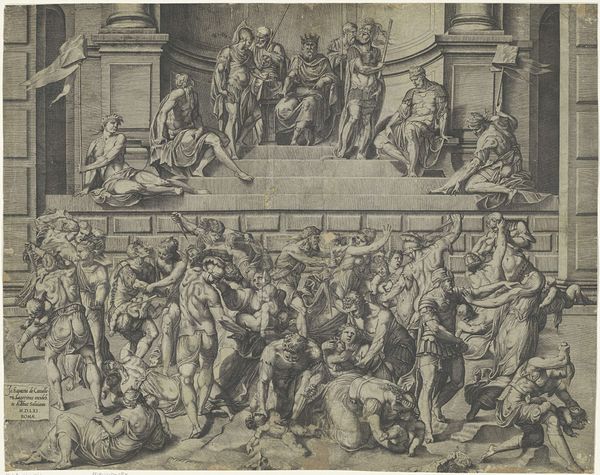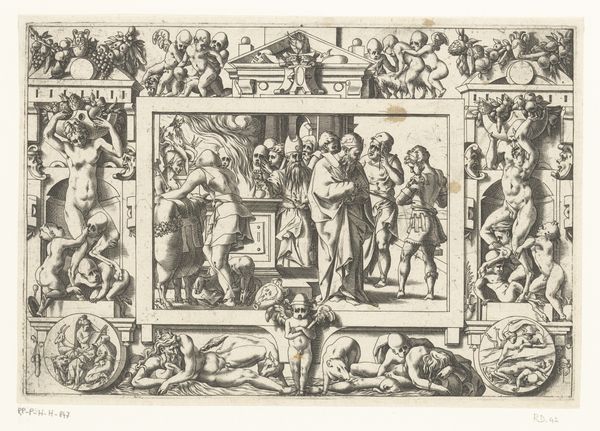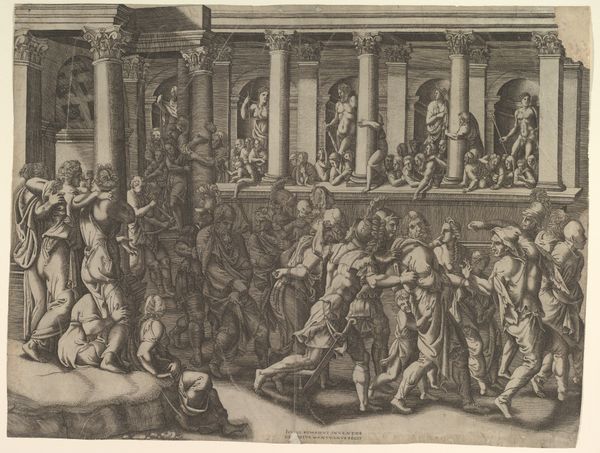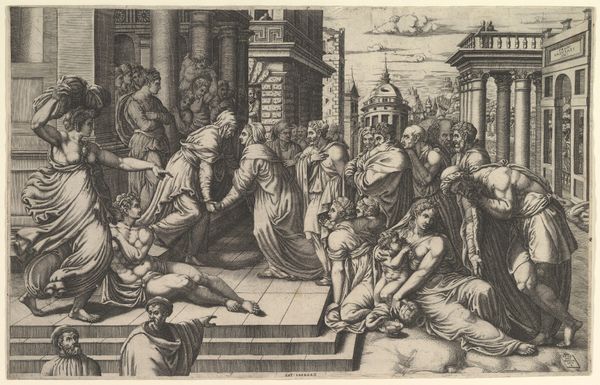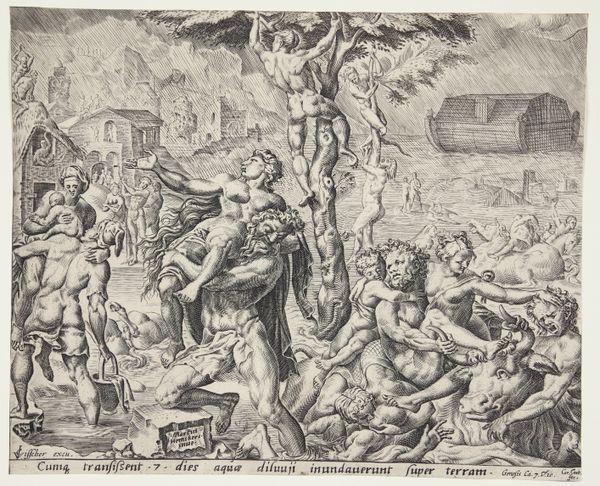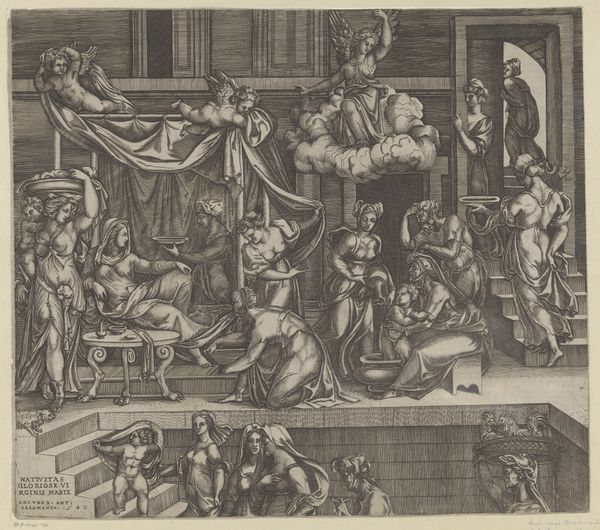
The destruction of the Temple of Baal and the slaughter of his priests 1567 - 1570
0:00
0:00
print, engraving
# print
#
mannerism
#
figuration
#
history-painting
#
engraving
Dimensions: 205 mm (height) x 249 mm (width) (bladmaal)
Curator: Here we have "The Destruction of the Temple of Baal and the Slaughter of His Priests," an engraving by Philips Galle, dating from around 1567 to 1570. Editor: Whew, what a title. Visually, it's… intense. An organised riot caught in freeze-frame, perhaps. The contrast of light and shadow gives it a decidedly theatrical feel. Curator: It's Mannerist, so drama is almost guaranteed! Note the composition, with the slaughter occurring in the foreground. Ascending the staircase we see those who have given the order standing rather formally. It's all a very carefully orchestrated chaos. Editor: Orchestrated chaos, I like that. It’s like Galle's saying, “Look how sophisticated I can make destruction look." Do you think the graphic nature of the work aimed at a sensation or a more profound religious feeling? Curator: Considering the context, deeply entrenched religious conflict between the 16th-century Protestants and Catholics, this print likely served a dual purpose. It was to inspire the righteous through depictions of iconoclasm against idols, and fuel anxieties related to heresy, through violent depictions of the opposing "false idols". Editor: Ah, so like propaganda of its time! Those foreground figures do give it such visceral presence. It's almost hard to look away from the grim details despite how formal everything else is around it. What I mean is, all the dynamism is below the King at the top of the stairs, yet there he stands in triumph! Is this irony or an exaltation of monarchy and divine decree? Curator: A complex layering, I'd say! It's not a simple good-versus-evil scenario as it may first appear, with all its conflicting visual cues. We see it with the meticulous rendering, and how the formalist style can communicate power as effectively as the rawest emotion. Editor: That interplay fascinates me! To consider how this print uses drama and artifice not just to narrate an event, but to make you consider how meaning is made. Thank you. Curator: Thank you as well.
Comments
No comments
Be the first to comment and join the conversation on the ultimate creative platform.
